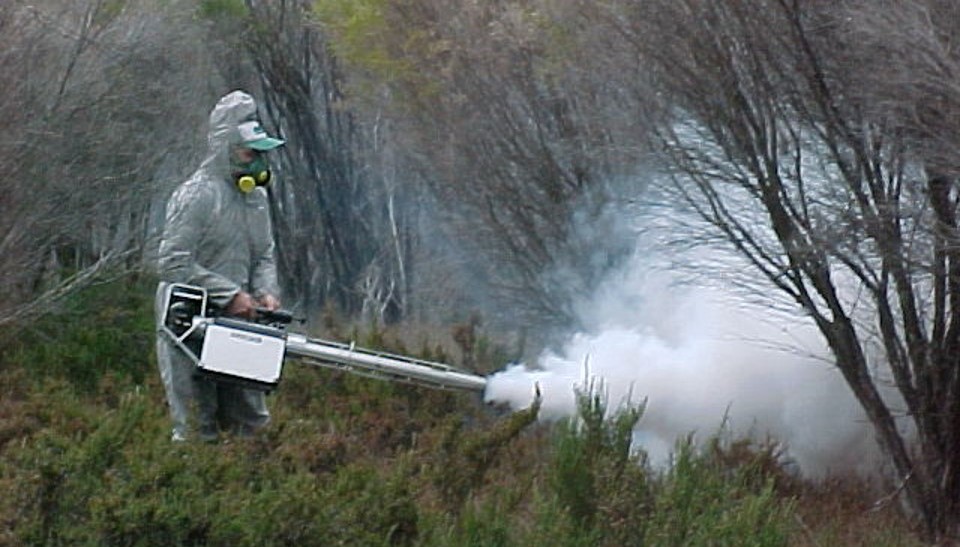Adulticides target adult mosquitoes and can be used in fogging activities or as a residual barrier treatment. It is important to note that adulticides are not target-specific and will kill other insects, such as bees and dragon flies, and can also be lethal to fish.
Fogging
Fogging involves the application of an adulticide, generally a synthetic pyrethroid, via thermal or ultra-low volume (ULV) space spraying equipment. The mode of action of synthetic pyrethroids involves disruption of the nervous system, resulting in paralysis and eventual death of the adult mosquito. As adulticides are not target-specific, fogging is only recommended when there is an imminent public health risk associated with mosquito-borne disease transmission. There is no residual effect from these products. Fogging activities should be planned appropriately to ensure wind conditions are optimal, there is no rain and the product will not drift over wetlands or water bodies where fish may be present.
A common misconception is that fogging does not require any monitoring of the target population, or at the very least, only requires monitoring of adult numbers to evaluate treatment efficacy. It is important to note that larval monitoring helps to anticipate the timing of adult emergence and therefore, the likely timeframe in which fogging will need to take place.
Thermal fogging requires the adulticide to be first diluted in a carrier liquid (often oil-based). The fogging equipment uses hot gas to heat and vaporise the liquid. On application, the vapour hits cold air and condenses to form a visible white fog (as seen below). Ultra low volume (ULV) or cold fogging equipment uses large volumes of air at low pressure to break up the liquid into droplets. The spray droplets are generated without the need for heat. Water-based diluents can be used, which are more environmentally favourable. The white fog associated with thermal application is not observed with ULV application.

Residual barrier treatments
Residual barrier treatments involve application of a synthetic pyrethroid to any surface where adult mosquitoes may land. This may include internal/external building walls, eaves, fences, vegetation or foliage. If applied appropriately, the product binds well to surfaces and can provide control for 6-8 weeks. Residents can have these applications applied by a licenced pest technician. It is important to note that these products are not target-specific either, and will knock down all other insects that come in to contact with the surface. They are also toxic to fish and other aquatic fauna so should not be applied near waterways.